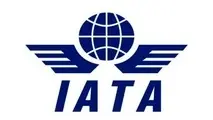IATA: Best 1H growth rate for air freight in seven years

Global air freight traffic has risen 10.4% during the first half of 2017, making it the strongest half-year performance for the air cargo market sector in seven years, according to IATA’s June Air Freight Market Analysis.
Freight capacity for the 1H grew 3.6% compared to the same period in 2016, resulting in a freight load factor of 44.8%. “Demand growth continues to significantly outstrip capacity growth, which is positive for yields,” IATA said.
In June, air freight traffic grew 11% year-over-year (YOY), down from 12.7% in May, but significantly exceeding the 3.9% five-year average pace. Freight capacity was up 5.2% YOY in June, resulting in a 45% freight load factor for the month.
But IATA senior economist David Oxley reaffirmed that the “best of the cyclical upturn in air freight may now have passed … while business surveys still indicate growing export orders, the new export orders component of the global manufacturing PMI [purchasing managers’ index] has broadly tracked sideways since March.” Unless global manufacturers’ export orders increase, a moderation in YOY air freight growth will likely materialize toward the end of the year.
“Nonetheless, the strong finish to 2016 and start for 2017 for freight volumes both lay the groundwork for robust YOY growth in [traffic] this year as a whole,” Oxley said.
Carriers in Asia-Pacific and Europe were responsible for two-thirds of the annual increase in traffic during the first half of the year, IATA said.
In June, European carriers showed a 14.3% increase in freight traffic and a 6.1% rise in capacity. Europe’s overall cargo volume for the first half of 2017 was up 13.6%, with capacity up 5.4%. The region continues to benefit from strong export orders, IATA said.
Asia-Pacific carriers showed a 10.1% rise in freight volume in June, with a 7.8% rise in capacity. Year-to-date, Asia’s freight traffic has grown 10.1%, with a capacity rise of 4.8%. “Demand growth has been strongest, between 13-15%, on international routes within Asia as well as between Asia and Europe,” IATA said.
North American carriers’ air cargo volumes increased 12.7% in June; year-to-date, the region is showing a 9.3% increase, a marked contrast to -0.9% drop in volume the region showed in 1H 2016. “While the US dollar has fallen back since the start of the year, broader strength in the currency is continuing to support US inbound air freight,” Oxley said. “On the other hand, the strong dollar is also keeping outbound flows under pressure.”
Freight traffic for Middle Eastern carriers grew 3.7% in June, and 7.6% for the year to date, a slowdown from the region’s 10.8% average annual rate seen over the past five years. IATA said competition from carriers in other regions, particularly on the Asia-Europe route, has eaten into Middle Eastern carriers’ volumes. “For the first time in 17 years, the region’s share of total international freight flown in the first half of 2017 has fallen [to 13.9%, down 0.1 point YOY]” IATA noted.
Latin American carriers showed a 9.8% increase in air cargo volumes in June; for the year-to-date, though, the region’s volumes are up only 0.3%. Latin American freight volumes continue to be plagued by a difficult economic and political operating environment, IATA said, noting the June volume growth mainly reflects volatility in month-to-month traffic flows a year ago instead of an upward trend in 2017.
African carriers have made the biggest leaps, statistically, of all regions, with a 31.6% rise in cargo volume in June, and a 25.9% rise in freight volume for the year to date. The region, however, moves only a 1.6% market share. In particular, the region has seen a jump in traffic between Africa and Asia, and FTKs flown on the route “surged by more than 60% in the first five-months of 2017, compared to the same period last year,” Oxley said.
“Air cargo is flying high on the back of the stronger global economy. Demand is growing at a faster pace than at any time since the global financial crisis. That’s great news after many years of stagnation,” IATA DG and CEO Alexandre de Juniac said. “Even more importantly, the industry is taking advantage of this momentum to accelerate much-need process modernization and improve the value it provides to its many customers.”



